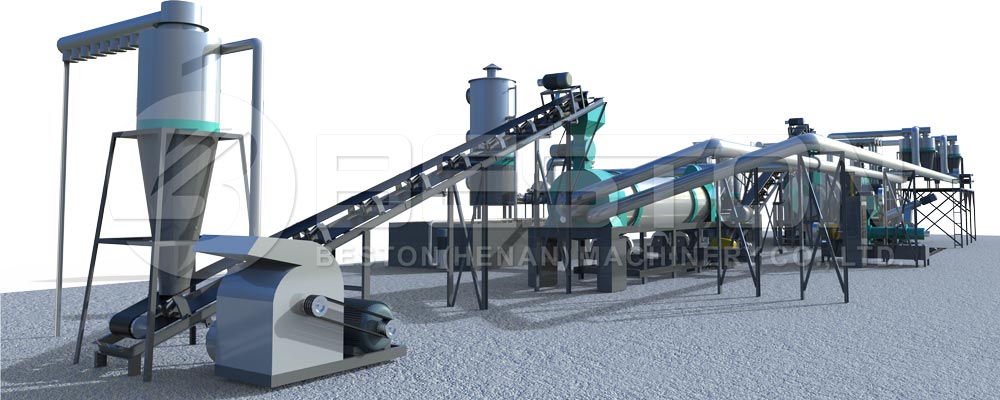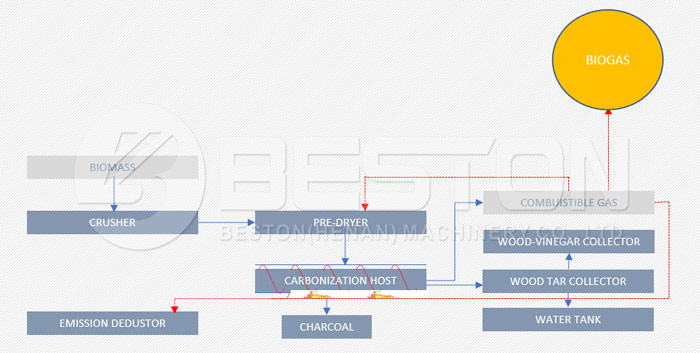Lately there has been a lot of attention paid to the process called pyrolysis. It is the decomposition of organic waste using heat in the absence of oxygen. When done correctly, there is no flame and no fire, since there is no oxygen present. This eliminates the smoke and toxic gases that are usually emitted when waste is incinerated. When most waste is decomposed by heat, it breaks down into small molecule byproducts like gases, oils, and carbon black. These ingredients are easily sold on the open market and the problems with large quantities of waste are eliminated at the same time. Here is a basic overview of biomass pyrolysis plant.

The Basic Three Byproducts of Biomass Pyrolysis
When almost all organic waste products, whether animal or vegetable, are heated to a very high temperature, they break down into just their basic components. First there are the gases, methane, hydrogen, propane, butane, and carbon monoxide. The pyrolysis machine will capture the combustible gases and use them to heat the reactor chamber which makes running the plant very economical.
The next ingredient is oil. There are varying amounts of oil, some plastics and tires release huge quantities of oil during the heating process. Other biomass products don’t have as much oil, but there is always some. The oil starts out in a super-heated state as a gas and then is liquefied by a condenser unit. There are sometimes up to three grades of oils light, medium, and heavy, each with its own valuable market. Plus, all of the oils can be refined into dozens of other petroleum products, or burned in industrial burners to make energy or heat. Click here to know more: https://bestonpyrolysisplant.com/.
Most Biomass Needs A Preheater
There are thousands of different types of biomass, from coconut shells, to olive seeds, and from corn stalks to rice husks. Every fruit, vegetable, and grain has seeds, husks, stems, stalks, or shells to contend with. There is nearly 1 billion tons of agricultural biomass created worldwide each year.

The combustible gases that are emitted, captured and saved for use in the pyrolysis reactor chamber, can also be fed to the preheater/grinding machine. Most biomass will need to have the moisture content below 25% in order to be fed into the biomass carbonization machine. Any biomass that is made of large pieces will have to be ground or crushed to ensure that it is heated evenly for the best efficiency.
There are plenty of variables that can be changed depending on what kinds of byproducts are desired. Most pyrolysis machines can be adjusted to give more biochar and less oil and gas or less biochar and more oil. It depends on the temperature and time in the chamber. For best results, check with your manufacturer to see which settings are required on your machine to get the desired results. Either way, you’ll be helping the environment stay cleaner, and possibly store more carbon in the soil to slow down global warming.